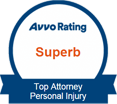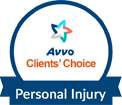What should be a nice time out at a restaurant can be ruined by an unexpected injury. Whether you are injured by slipping, poisoning, burning, or a cut, you may have questions about what your rights are and if you can seek compensation. After a restaurant injury, the situation can become complicated, as medical bills and lost wages only add to the initial distress.
Several factors critically influence your settlement, including the seriousness of your injury and the strength of the evidence you can present. Furthermore, there are steps needed to start and pursue a successful claim. Knowing these aspects will help you seek proper redress and financial compensation after an unexpected incident during your dining experience.
Steps You Should Take in the First 24 Hours Following a Restaurant Accident
You might feel confused right after a restaurant accident, but what you do in the next 24 hours can impact your health and any potential personal injury claim. Acting fast and firmly can make a big difference in keeping you safe and preserving vital evidence.
Taking care of your health should always be your primary concern. Whether an injury is minor or grave, you should always seek medical help immediately. In addition to finding and treating any symptoms, a medical evaluation provides a written document of your injuries that will be important if you need to go to court. The record proves that the accident did affect your physical health.
When your health has improved, inform the restaurant’s management about what happened immediately. Reporting the incident gives rise to an official report confirming the accident occurred. Stay calm and explain the facts without blaming yourself or guessing what could have happened.
After the report, you should carefully record all the details. Take pictures and videos of the hazard that caused the accident, your injuries, and the location around the accident. Try to record from different angles and at various distances. This visual record is vital if your injuries resulted from a slip and fall incident. These images can strongly highlight the causes of your accident and the extent of your injuries.
Furthermore, if anyone witnessed the accident, obtain their name, phone number, and account of what they saw. A witness statement can match your story and offer an impartial view of what happened, helping your case. They might notice crucial details that you were too shocked to see in the immediate aftermath.
It is best to avoid giving a recorded statement to the restaurant’s insurer until you have consulted a lawyer. Adjusters are trained on how to collect information that could hurt your case. Seeking legal advice before speaking to the adjusters protects you from inadvertently making statements that could harm your claim in court.
California's Premises Liability Law for Restaurants and How it Determines Fault
If an accident happens in a restaurant, the legal fault rules set by California’s premises liability law apply. This area of law outlines what restaurant operators and other property owners must do to keep their guests safe. In short, the restaurant must keep its premises safe for the customers.
Establishing negligence is usually the primary focus in proving fault in a restaurant accident, and this focuses on four critical elements:
-
Duty of care
-
Breach of the duty of care
-
Causation, and
-
Damages
-
Duty of care
A restaurant is required by law to prevent harm that could reasonably be expected to happen to its customers. They have to inspect their place of business regularly and handle any safety problems they find or ought to have noticed.
-
Breach of the Duty of Care
For example, this duty could be breached when the restaurant fails to clean a spill or fix a broken fixture immediately. This breach means the property owner could not act like a reasonable person in a similar situation. The unsafe condition is caused or made worse by what the restaurant does or fails to do.
-
Causation
You must show that the restaurant’s negligence directly caused your injuries. You should prove that the restaurant’s negligence was the primary reason for your accident and the harm you suffered.
For example, if you slipped and fell on a wet floor with no warning sign, the lack of the sign (the breach of duty) was the direct cause of your injury.
-
Damages
Damages refer to the real losses you suffered because of the accident. Some of these costs could be your medical costs, which pay for visits to the ER, appointments with doctors, and continuous treatments, therapies, and prescriptions. You could also claim lost wages, since not being able to work because of your injuries means you do not receive any income for that period.
Beyond tangible losses, damages may also involve compensating you for the pain and suffering the incident caused. This aspect intends to cover the physical discomfort, emotional distress, and reduced quality of life you have experienced because of the incident. Aside from the financial loss, this aspect considers how the accident has affected your health and happiness.
Identifying these damages is crucial because it helps you understand and ensure what you are entitled to, and all your losses, whether financial or not, are considered in a personal injury claim.
Common Injuries in Restaurant Accidents
A restaurant has several risks that could cause different types of injuries. They include:
-
Slip and Fall Injuries
You will likely see slip and fall incidents in a restaurant because of wet or greasy floors, spills, uneven surfaces, or clutter. As a victim of a slip and fall accident, you could suffer the following injuries:
-
You can twist any of your ankles, wrists, or knees and experience a sprain.
-
Due to sudden impacts, you might suffer strain injuries to your muscles or tendons, usually in your back, neck, or shoulders.
-
You could fracture bones, and these usually occur in your wrists, arms, legs, hips, or ribs when you fall.
-
Traumatic injuries to the head, which can vary from concussions (mild brain damage) to more serious injuries called traumatic brain injuries (TBIs), can occur if you hit your head on a hard surface.
-
You are likely to notice bruises and contusions, which are evidenced by changes in skin color and swelling, because of the recent impact.
-
You might suffer cuts or lacerations if you fall and your skin touches sharp objects or broken dishes.
-
You could injure your muscles, ligaments, and tendons, resulting in pain and reduced mobility.
-
Burn Injuries
Since restaurants have hot equipment, boiling liquids, and open flames, you could suffer burn injuries. These injuries vary and can occur from different sources. The common burn injuries include:
-
Thermal burns — You may suffer a thermal burn through direct contact with hot surfaces, like stoves, grills, ovens, hot plates, or liquids like boiling water, oil, or soup. As a result, you could suffer any of the following injuries:
-
First-degree burns, which only reach the top layer of your skin, result in reddening and slight pain
-
In second-degree burns, the skin is damaged more deeply, and this leads to blisters, redness, and a lot of pain
-
The most serious burns are called third-degree, as they destroy all your skin and may even damage the tissue underneath, looking white or charred and often feeling no pain because of the damaged nerves.
-
Contact burns — You may suffer these burns when you touch hot utensils, pans, or equipment.
-
Scalds — They are burns that happen when hot liquids or steam touch the skin.
-
Flash burns — These take place when flammable materials or grease ignite all at once
-
Chemical burns —Although thermal burns are more frequent, you could also experience chemical burns after touching strong cleaning products in the kitchen.
-
Foodborne Illness or Food Poisoning
Food poisoning is not a direct accident, but can happen if the restaurant staff does not store or handle food correctly. Depending on the pathogen or toxin that causes food poisoning, your symptoms can vary a lot, but they could include the following:
-
You might feel nauseous and throw up, experience diarrhea that may cause dehydration, and have abdominal pain and cramping
-
A fever and chills could develop in response to the infection
-
A headache is a common symptom associated with a variety of illnesses
-
You will probably notice that you are tired and have little energy
-
If the pathogen is particularly severe, you might become dehydrated, your electrolyte levels might get out of balance, or your kidneys could fail (as with some E. coli strains), or you could have paralysis (as with botulism)
-
Occasionally, foodborne illnesses may cause long-term health issues like arthritis or irritable bowel syndrome.
How Much is Your Restaurant Injury Settlement Worth?
After an injury at a restaurant, the next question often concerns securing compensation. Legal professionals use several approaches to determine a fair settlement range, even though no average settlement figure applies to all cases.
To estimate your settlement, combine your economic and non-economic damages. The main principle behind most personal injury valuations is the equation:
Economic Damages + Non-Economic Damages = Total Settlement Value
Each component represents a distinct loss you may have experienced, so accurately calculating each is essential for a fair result.
The first step is to tally up your economic losses, which are commonly known as special damages. These losses are clear, can be measured, and are directly attributable to the accident. Both old and new medical bills, including emergency treatment, diagnostic tests, surgeries, medications, and therapy, are included on the checklist. Summing up these hard costs gives you an accurate financial baseline for your claim.
The first step in the process is to value your non-economic or general damages, which are meant to cover the less obvious losses attributable to the accident. You can compute this by using the multiplier method. This method requires you to multiply your total economic damages by a multiplier generally between 1.5 and 5. The multiplier that is set depends mainly on:
-
The severity of your injury
-
How long will it take to recover
-
If the injury causes lasting scarring or disability, and
-
The effect the injury has had on your daily activities and hobbies
If the injury leads to a longer recovery and significantly affects your life, it will warrant a higher multiplier in calculating damages.
For a better understanding, let us look at an example where Jane slips and falls in a restaurant.
Jane was eating at a nearby restaurant when she fell over an unmarked wet floor and broke her wrist.
The economic damages Jane suffered were worth $20,000. She incurred:
-
$15,000 in medical costs that covered the emergency room, her wrist surgery, and three months of physical therapy
-
Lost $5,000 in wages while she recovered
Given the nature of Jane’s injury, which was painful, it required surgery and long-term physical therapy, a reasonable multiplier for her non-economic damages would be 3. Using the multiplier, her non-economic damages are determined by multiplying her economic damages ($20,000) by 3, which gives $60,000.
As a result, without looking at other aspects, Jane’s presumed settlement value would be $20,000 for economic damages and $60,000 for non-economic damages, giving a total of $80,000.
California follows the legal idea of "pure comparative negligence." If a victim is partly responsible for the accident, they can still obtain damages. However, the amount they will receive in compensation will be reduced by the same percentage as their share of responsibility.
For example, the insurance company of the restaurant in Jane's slip and fall case states Jane was distracted by texting and so caused her accident. Following the negotiations or the trial, it was decided that Jane was 25% responsible for falling. Jane’s initial settlement value of $80,000 would be lessened by 25% since she was responsible for 25% of the accident. Thus, the settlement offer changes to $60,000 (80,000 - $20,000).
This scenario demonstrates why insurance companies usually try to place the blame on the injured person. Their strategy is to pay less by assigning more blame to the claimant. Therefore, hiring an experienced personal injury attorney who can fight against wrongful accusations and help you receive fair payment is very important.
Navigating Your Restaurant Accident Claim
After suffering a restaurant accident, you should follow a step-by-step process, as understanding each part can give you an idea of what to expect as you pursue your claim. Even though every case is different, a general roadmap gives you an idea of what to expect.
-
Investigation and Building Your Case
Once you hire an attorney, they will collect evidence such as incident reports, witness statements, medical records, and photographs. This process is essential for your claim and can last for several weeks to a few months, depending on the details of your case.
-
The Demand Letter and Initial Negotiations
When the investigation is over and the total damages are known, you should send a demand letter to the at-fault person's insurance company. The letter details the accident, outlines your injuries, presents the evidence gathered, and suggests a settlement amount based on the economic and non-economic damages discussed previously. The demand letter marks the start of settlement negotiations and usually prompts a response from the insurance company within a few weeks.
The next step after sending the demand letter is to start negotiations. This process often happens several times as your attorney and the insurance adjuster discuss your claim, present your arguments, and try to block any unfair offers. Several offers and responses can be made at this stage, and how long it takes often depends on how much the parties want to agree on a fair deal.
-
Litigation
If the talks do not result in a suitable agreement, the next step is to file a lawsuit. Consulting with your attorney helps you decide, and this step starts a more serious legal procedure. Even when a lawsuit is ongoing, parties can keep negotiating a settlement, and many cases end this way before going to trial. The process may occur during the litigation phase for over a year, requiring discovery, depositions, and pre-trial motions.
Usually, you have two years from the day of the accident to start a lawsuit. If you do not meet the deadline, you may lose the ability to ask for compensation. Engaging an attorney can complete all necessary legal actions on time, and your claim will be adequately protected. Thanks to their skills and dedication, you can trust them to handle your legal case and secure the best outcome.
-
Settlement and Disbursement
If a settlement is agreed upon through talks or mediation, or if you win at trial, the process continues to settlement and disbursement. Following this, the insurance company gives you the money from the settlement. Afterwards, your attorney will use the funds to cover all medical liens and legal costs, then distribute what is left to you. Remember that some cases are settled quickly, but others take much longer.
Find a Personal Injury Attorney Near Me
Being hurt at a restaurant is disheartening. Knowing what to do afterwards helps you defend your health and rights. Record everything at the scene and your subsequent injuries, and see a doctor promptly. You should also understand how your damages are determined.
Navigating California premises liability law and insurance company negotiations can be challenging. For this reason, seeking legal help is necessary to guarantee that you are adequately compensated for what you have experienced. You should be able to concentrate on your health, with the stress of lawsuits out of the way.
If you have suffered an injury in a restaurant, we are ready to advise you on your rights and calculate the real worth of your case. Contact The Personal Injury Attorney Law Firm for a free and non-committal consultation. You can call us at 800-492-6718.
 800-492-6718
800-492-6718







